
[ad_1]
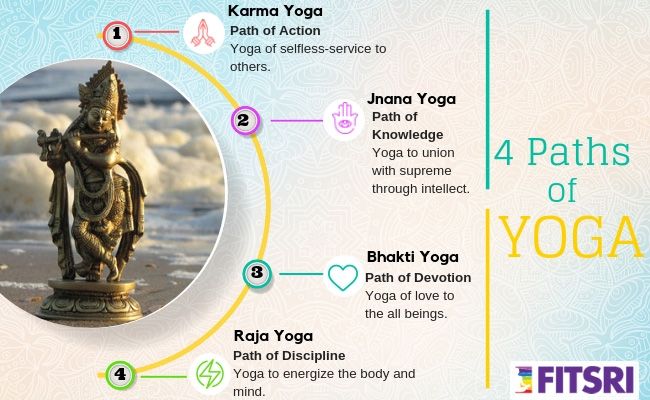
Within the huge tapestry of yogic philosophy, the Bhagavad Gita, a respected textual content in Hinduism, serves as a guiding gentle. On this textual content, Lord Krishna talks in regards to the secrets and techniques of non secular enlargement in the course of the lens of 4 paths of yoga.
Get Yoga Mudras for Your Distinctive Well being and Energy
Subscribe these days and get a personalized Yoga Mudra prescription.
On this article, we will be able to perceive those 4 paths of yoga, ceaselessly known as “the 4 kinds of yoga in Hinduism.” Each and every of those paths, Karma Yoga, Jnana Yoga, Bhakti Yoga, and Raja Yoga, gives a singular option to self-realization, catering to other persona varieties and non secular tendencies. In combination, they supply a complete roadmap for people in quest of to harmonize their interior and outer worlds.
What Are the 4 Paths of Yoga?
The 4 paths of yoga, ceaselessly known as “the 4 kinds of yoga in Hinduism,” are the foundational routes to non secular enlargement and self-realization. The 4 paths of yoga are: Karma Yoga, Bhakti Yoga, Rāja Yoga and Jñāna Yoga. They’re defined within the Bhagavad Gita, a sacred Hindu scripture, and be offering distinct approaches to reaching a harmonious union with the divine.
Goal: The main objective of four paths of yoga is to steer folks on their adventure to self-realization and non secular enlightenment. Each and every trail caters to other persona varieties and temperaments, offering a personalised path to interior transformation.
Origins: The idea that of the 4 paths of yoga originated from historical Hindu philosophy and scriptures, with the Bhagavad Gita serving as a pivotal textual content that elucidates those paths. They constitute the quite a lot of techniques folks can navigate the complexities of existence and the thoughts to score non secular awakening.
Essence in Yoga: Those paths shape the very essence of yoga philosophy. They provide a complete framework for people to go beyond the constraints of the fabric global and hook up with their upper selves. Whether or not via selfless motion, wisdom, devotion, or meditation, those paths give you the gear and steering had to navigate the intricate terrain of the human revel in.
Karma Yoga – Trail of Selfless Motion
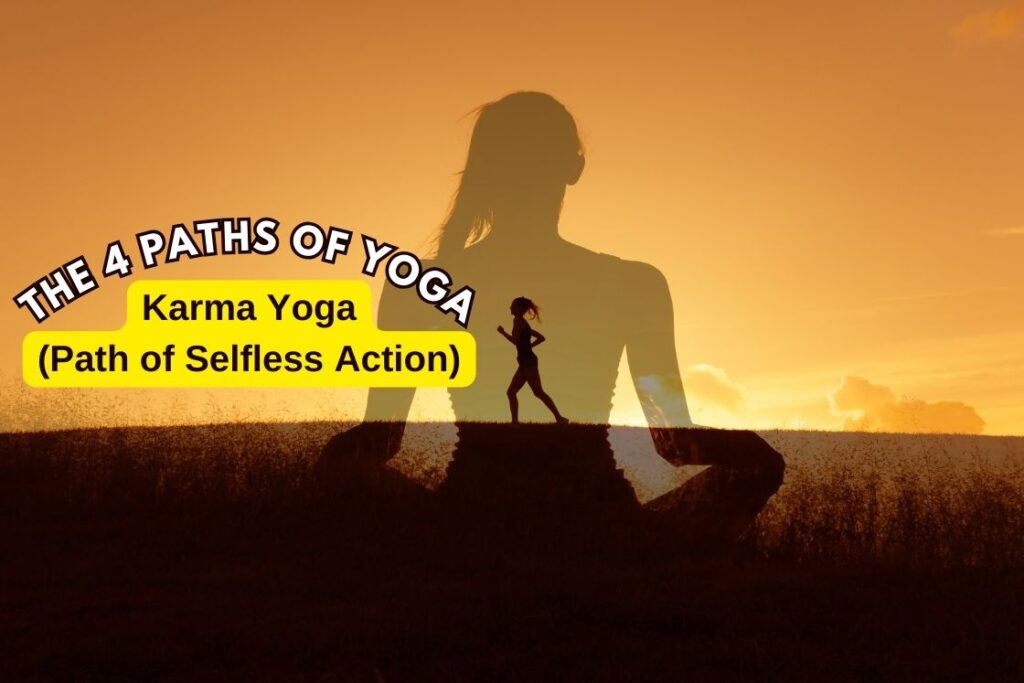
Karma Yoga, ceaselessly known as the “Trail of Selfless Motion,” is likely one of the 4 main paths of yoga. Rooted within the historical teachings of the Bhagavad Gita, Karma Yoga embodies the follow of selflessly attractive in movements with out attachment to results.
This trail acknowledges that each one movements in existence are interconnected and that through acting one’s tasks with willpower and altruism, one can reach non secular enlargement and liberation.
Goal and Essence
The essence of Karma Yoga lies in working out the concept that of karma, which indicates the legislation of purpose and impact. Karma is the accrued results of one’s movements, each excellent and dangerous, that influences long run reviews. By means of embracing Karma Yoga, folks search to purify their minds and hearts through selflessly dedicating their movements to a better objective, ceaselessly perceived as carrier to the Divine or humanity.
Karma Yoga isn’t confined to bodily deeds on my own; it encompasses psychological movements and intentions as neatly. Without equal objective is to go beyond the ego’s attachment to good fortune or failure, acquire or loss, and paintings with unwavering devotion and equanimity. This trail fosters the dissolution of the ego and the cultivation of virtues like selflessness, humility, and compassion.
Beginning and Influences
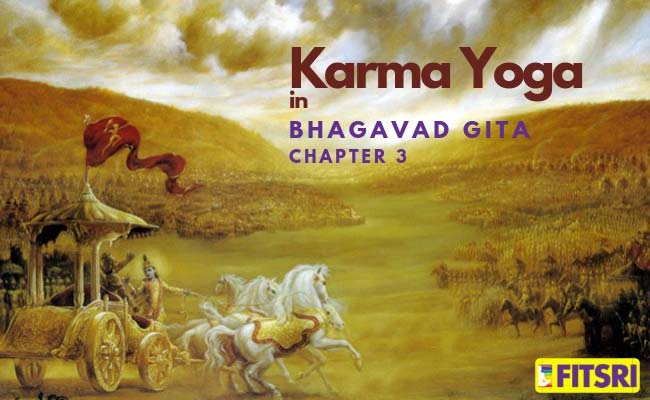
The idea that of Karma Yoga reveals its roots within the Bhagavad Gita that gifts a profound discussion between Lord Krishna and the warrior Arjuna. Lord Krishna, in his teachings to Arjuna, elucidates the significance of selfless motion and its position in non secular evolution.
Karma Yoga is deeply influenced through the rules of dharma (responsibility), which emphasize the righteous and ethical trail in existence. It integrates seamlessly with the wider framework of yoga, the place it enhances different paths, reminiscent of Jnana (Wisdom), Bhakti (Devotion), and Raja (Meditation) Yoga.
Alignment with Yoga Philosophy
Karma Yoga aligns with the overarching philosophy of yoga through spotting that the thoughts, when pushed through egocentric needs and attachment to results, is a supply of struggling. By means of attractive in selfless movements, folks regularly unfastened themselves from the shackles of the ego, decreasing the psychological impurities that difficult to understand the belief in their True Self. This trail empowers folks to go beyond the constraints of the fabric global and transfer nearer to non secular enlightenment.
Karma Yoga in Follow
The follow of Karma Yoga comes to acting one’s tasks and tasks with none expectation of private acquire or popularity. Folks follow mindfulness of their movements, dedicating their paintings to a better objective or the welfare of others. Provider to humanity, acts of kindness, and volunteerism are commonplace manifestations of Karma Yoga in day-to-day existence.
By means of regularly providing the result of their movements to a better splendid or divine concept, practitioners of Karma Yoga domesticate a way of detachment from the culmination in their exertions. Over the years, this ends up in a profound transformation of the person, fostering a deep sense of interior peace and self-realization.
Conclusion: Karma Yoga stands as an impressive trail that teaches us that selfless movements don’t seem to be just a method of serving others but additionally a transformative adventure towards non secular awakening. This is a trail of purity, the place folks try to purify their hearts and minds, transcending the ego’s boundaries, and in the long run knowing their cohesion with the Divine. Within the next sections, we will be able to discover the opposite 3 paths of yoga, every providing its distinctive option to self-realization and non secular enlargement.
Jnana Yoga – Trail of Wisdom
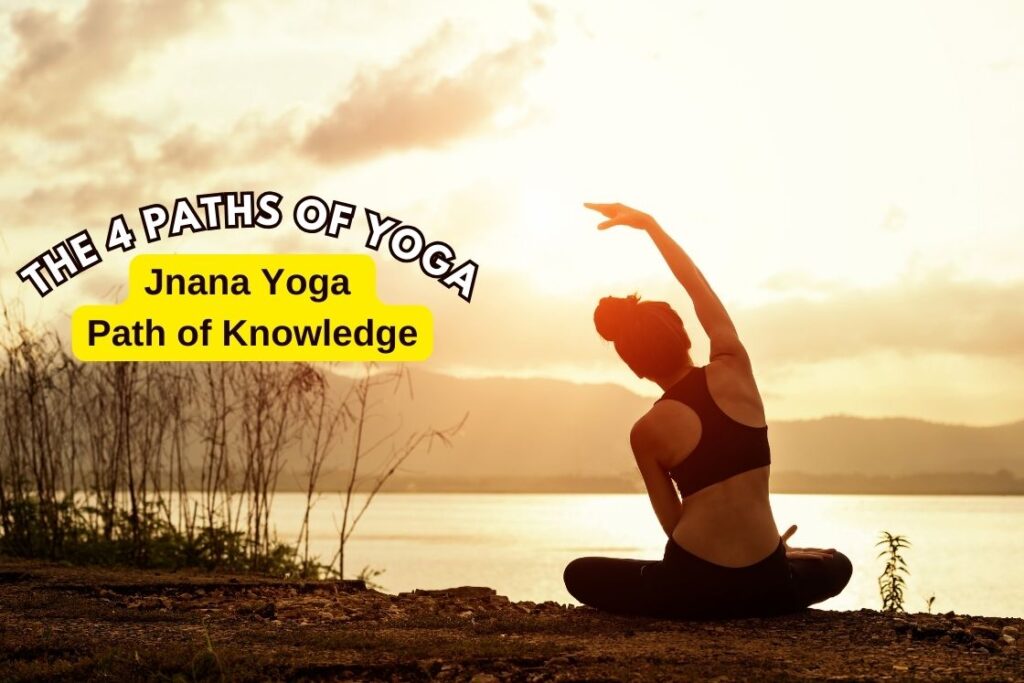
Jnana Yoga, ceaselessly known as the “Trail of Wisdom,” is likely one of the 4 number one paths of yoga. Rooted in profound philosophical inquiry, Jnana Yoga encourages seekers to discover the character of fact, self, and the universe in the course of the lens of knowledge and discernment. This trail acknowledges that true wisdom is the important thing to liberation and self-realization.
Goal and Essence
The essence of Jnana Yoga lies within the pursuit of self-realization in the course of the acquisition of non secular wisdom and knowledge. Practitioners of this trail search to go beyond the constraints of the ego-bound self and acquire a deep working out in their true nature. They acknowledge that the Self (Atman) is similar to the Common Awareness (Brahman) and that this realization ends up in liberation (moksha).
Jnana Yogis try to discern between the everlasting and the temporary, spotting that the fabric global is impermanent whilst the Self is everlasting and unchanging. Without equal objective is to do away with the lack of expertise (avidya) that veils one’s true id and accomplish a state of natural consciousness.
Beginning and Influences
The roots of Jnana Yoga may also be traced again to historical Indian philosophy, in particular the Vedanta faculty of idea. Vedanta asserts that fact is non-dual (advaita), and the pursuit of data is the method to understand this oneness. Influenced through the Upanishads and different sacred texts, Jnana Yoga integrates those philosophical rules into its follow.
The lessons of Adi Shankaracharya, a outstanding Indian thinker, additional enriched the philosophy of Jnana Yoga. His commentaries at the Upanishads and Advaita Vedanta are famend for his or her intensity and readability.
Additionally learn: Advaita Vedanta: The Philosophy of Non-Duality
Alignment with Yoga Philosophy
Jnana Yoga aligns with the wider philosophy of yoga through emphasizing self-inquiry and discernment. It acknowledges that the thoughts, when clouded through lack of expertise and ego, perpetuates struggling. By means of delving into the character of fact and the self, folks can dismantle the illusions that bind them and accomplish a state of liberation.
This trail recognizes that direct revel in and realization of 1’s true nature are without equal targets of existence. It enhances different paths of yoga through offering a basis of knowledge and working out upon which non secular practices are constructed.
Jnana Yoga in Follow
The follow of Jnana Yoga comes to deep self-inquiry, contemplation, and meditation. Seekers have interaction in profound philosophical discussions and learn sacred texts to achieve perception into the character of the Self and the universe. They query the very essence of fact, ceaselessly starting with the elemental inquiry, “Who am I?”
Discrimination (viveka) is a key facet of Jnana Yoga, permitting practitioners to tell apart between the actual and the artificial, the everlasting and the temporary. They learn how to disidentify from the ego and acknowledge their oneness with the Ideal Fact.
By means of cultivating knowledge and self-awareness, Jnana Yogis regularly dissolve the ego’s illusions, resulting in the direct realization in their divine nature.
Conclusion: Jnana Yoga invitations us on a profound adventure of self-discovery and knowledge. It emphasizes the significance of transcending lack of expertise and knowing our true nature as everlasting and unchanging. Within the next sections, we will be able to discover the remainder paths of yoga, every providing its new angle to non secular enlargement and self-realization.
Bhakti Yoga – Trail of Devotion
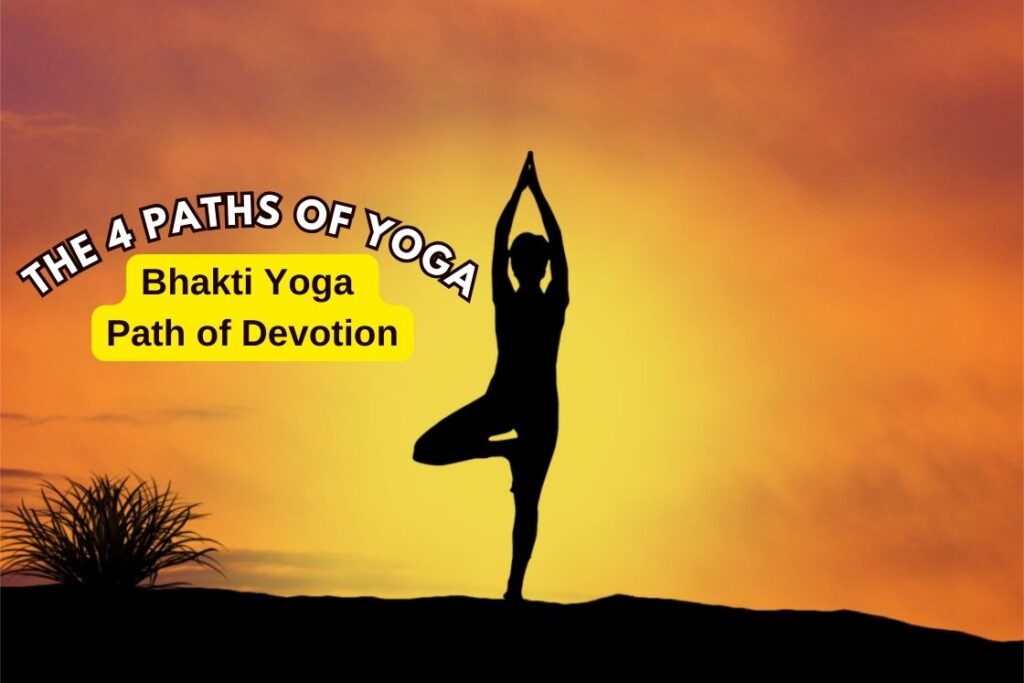
Bhakti Yoga, ceaselessly known as the “Trail of Devotion,” is likely one of the 4 number one paths of yoga. Rooted in unwavering love, devotion, and give up, Bhakti Yoga is a heartfelt adventure against oneness with the Divine. It acknowledges that the purest type of devotion may end up in without equal union with the Ideal.
Goal and Essence
The essence of Bhakti Yoga lies within the cultivation of profound devotion and love for the Divine. Practitioners of this trail search to ascertain an intimate, loving courting with the Divine, spotting the presence of the Divine in all facets of lifestyles. Without equal objective is to go beyond the ego and merge with the Divine in a state of natural love and give up.
Bhakti Yogis needless to say the trail of devotion is on the market to all, without reference to age, background, or wisdom. It gives an immediate and out there method of connecting with the Divine and experiencing a way of cohesion and unity with all of introduction.
Beginning and Influences
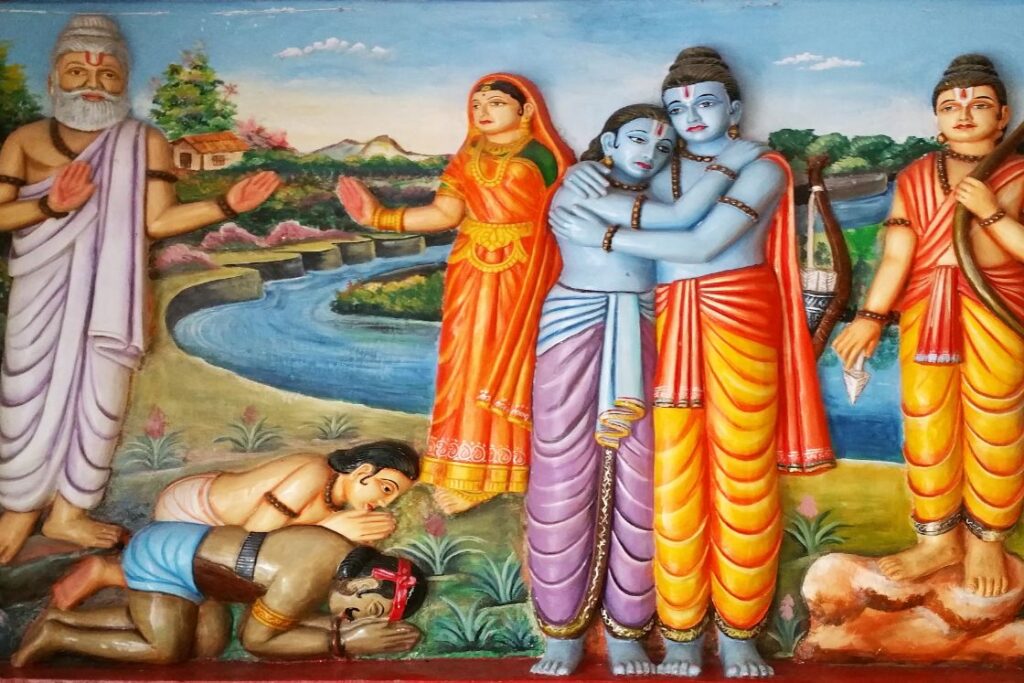
Bhakti Yoga reveals its roots in Bhagavad Gita, the Ramayana, and the Bhagavata Purana. Those hindu texts emphasize the importance of unwavering devotion to God as a way to score non secular realization.
During historical past, a large number of saints and sages have performed a pivotal position in popularizing and working towards Bhakti Yoga. Their devotional songs, hymns, and teachings have impressed numerous folks to embark at the trail of affection and devotion.
Alignment with Yoga Philosophy
Bhakti Yoga aligns with the wider philosophy of yoga through emphasizing the facility of affection, devotion, and give up as potent gear for self-realization. It acknowledges that the ego may also be transcended in the course of the overwhelming drive of affection for the Divine.
This trail recognizes that the Divine may also be worshiped and approached in quite a lot of bureaucracy, be it a private deity, a common drive, or the formless Absolute. Bhakti Yoga enhances different paths of yoga through offering a heart-centered basis upon which non secular practices are constructed.
Bhakti Yoga in Follow
The follow of Bhakti Yoga comes to acts of devotion, reminiscent of prayer, making a song devotional songs (bhajans), and taking part in rituals and ceremonies devoted to the Divine. Seekers ceaselessly make a selection a private deity or type of the Divine that resonates with their hearts.
Central to Bhakti Yoga is the concept that of give up (prapatti), the place practitioners relinquish their egoic needs and believe within the Divine’s will. This give up is marked through unwavering religion and entire acceptance of existence’s cases.
By means of immersing themselves in acts of affection and devotion, Bhakti Yogis revel in profound states of bliss and ecstasy. They imagine that via selfless love for the Divine, they are able to succeed in union with the Ideal.
Conclusion: Bhakti Yoga beckons us to embark on a heart-centered adventure of devotion and give up. It teaches us that love for the Divine is a transformative drive that may lead to non secular realization. Within the next sections, we will be able to discover the remainder paths of yoga, every providing its new angle to non secular enlargement and self-realization.
Raja Yoga – Trail of Self-discipline
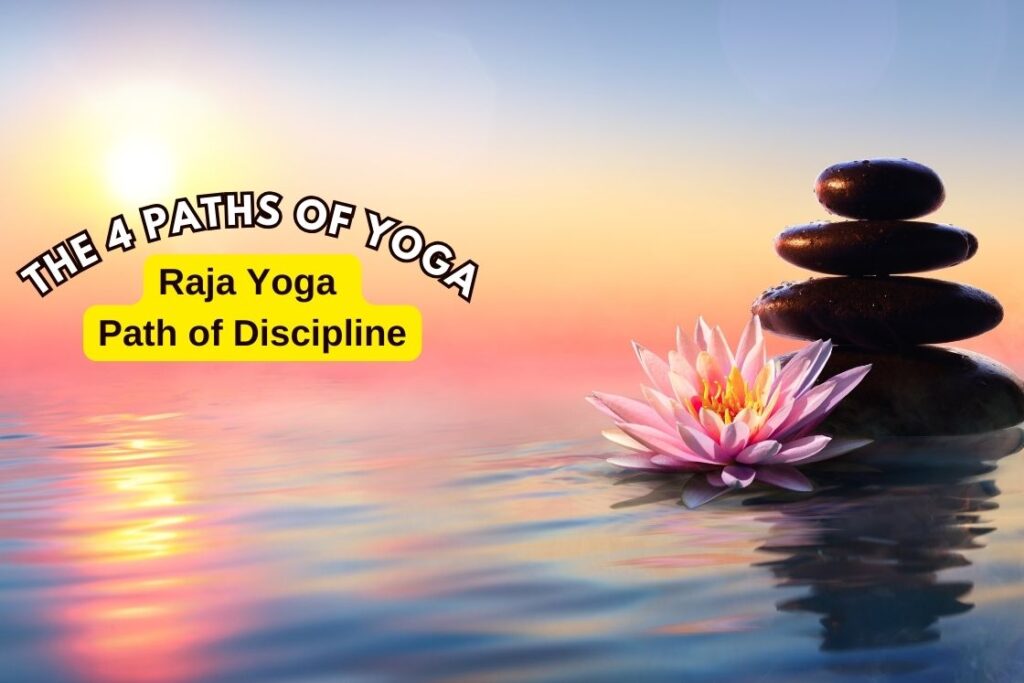
Raja Yoga, ceaselessly known as the “Trail of Self-discipline,” is a complete device of yoga that makes a speciality of the mastery of the thoughts and strength of will. Rooted in Patanjali’s Yoga Sutras, this trail supplies a structured framework for people in quest of to score interior peace, psychological readability, and non secular realization.
Goal and Essence
The essence of Raja Yoga lies within the meticulous self-discipline and keep an eye on of 1’s thoughts and senses. This is a trail that ends up in self-mastery, permitting practitioners to harness the facility of their very own minds to succeed in non secular awakening. Without equal objective is to go beyond the fluctuations of the thoughts and accomplish a state of profound interior stillness and realization of the Self.
Raja Yoga teaches that the thoughts is each the supply of struggling and the important thing to liberation. Thru disciplined practices, seekers purpose to quiet the thoughts’s incessant chatter, conquer distractions, and revel in the natural consciousness that lies underneath the psychological turbulence.
Additionally learn: Is Raja Yoga similar as Ashtanga yoga?
Beginning and Influences
Raja Yoga is rooted within the historical teachings of Patanjali, a sage who compiled the Yoga Sutras, a foundational textual content that gives a scientific information to the follow of yoga. Patanjali’s teachings have very much influenced the advance of quite a lot of yoga kinds and meditation tactics.
The trail of Raja Yoga has been delicate and expanded upon through a large number of non secular leaders and yogic philosophers, making it one of the vital broadly practiced kinds of yoga within the trendy global.
Alignment with Yoga Philosophy
Raja Yoga aligns intently with the wider philosophy of yoga through emphasizing the significance of psychological and emotional mastery. It recognizes that the thoughts’s fluctuations (vrittis) are a vital impediment to self-realization and interior peace.
This trail acknowledges that the thoughts could be a treasured instrument when correctly harnessed and regulated. It teaches that through working towards explicit tactics, reminiscent of meditation, focus, and breath keep an eye on, folks can succeed in a state of profound interior steadiness and readability.
Raja Yoga in Follow
Central to Raja Yoga is the follow of meditation (dhyana). Seekers devote themselves to common meditation periods, which contain targeted consideration on a delegated object, such because the breath, a mantra, or a visible image. Meditation allows folks to look at their ideas with out attachment, regularly calming the thoughts’s fluctuations.
Some other crucial element of Raja Yoga is the follow of asana (bodily postures) and pranayama (breath keep an eye on). Those practices lend a hand get ready the frame and thoughts for meditation through improving bodily flexibility, strengthening the apprehensive device, and regulating the breath.
The trail of Raja Yoga additionally comprises moral pointers (yamas and niyamas) that advertise virtuous dwelling, self-control, and ethical habits.
Conclusion: Raja Yoga beckons us to embark on a disciplined adventure of self-mastery and psychological keep an eye on. It teaches us that via meditation, asana, and breath keep an eye on, we will quiet the thoughts’s turbulence and accomplish a state of profound interior stillness. Within the next phase, we will be able to discover the concept that of mixing those paths and without equal purpose of yoga.
Combining the 4 Paths – Yoga of Synthesis
The adventure of self-discovery and non secular awakening via yoga does now not require unique dedication to a unmarried trail. In truth, many practitioners in finding that combining components from more than one paths, referred to as the “Yoga of Synthesis,” may end up in a extra holistic and profound yoga revel in.
The Yoga of Synthesis, ceaselessly attributed to Swami Sivananda, emphasizes the concept other folks have distinctive strengths and tendencies. Whilst one might resonate deeply with the trail of Bhakti Yoga, some other might in finding their non secular calling in Raja Yoga or Karma Yoga.
The Yoga of Synthesis encourages practitioners to acknowledge that those paths don’t seem to be mutually unique however complementary.
The essence of this way lies within the working out that every trail serves a particular objective within the adventure towards self-realization. Karma Yoga cultivates selflessness and motion, Jnana Yoga nurtures knowledge and self-inquiry, Bhakti Yoga fosters devotion and love, and Raja Yoga hones psychological self-discipline and meditation. By means of embracing facets of every trail, folks can create a extra balanced and built-in follow adapted to their distinctive wishes and aspirations.
The Yoga of Synthesis permits practitioners to conform their follow to converting cases and existence levels. For example, an individual would possibly predominantly observe Karma Yoga all the way through energetic levels of existence, the place selfless carrier and motion are crucial. In instances of introspection and self-inquiry, Jnana Yoga might take priority.
The Final Function of the 4 Paths of Yoga
The follow of yoga, via its quite a lot of paths, serves a profound objective—to steer folks towards a state of union, self-realization, and non secular awakening. Whilst the 4 paths of yoga might seem distinct, all of them proportion a commonplace purpose: the belief of the real self and without equal union with the divine.
Union with the Divine: At its core, without equal purpose of all 4 paths of yoga is to facilitate a deep and transformative union between the person soul (Atman) and the common awareness (Brahman). This union is ceaselessly known as self-realization, enlightenment, or Samadhi, and it represents the fruits of the yogic adventure.
- In Karma Yoga, folks dissolve their ego-driven identities through acting selfless movements, in the long run spotting their oneness with all of introduction.
- Jnana Yoga leads practitioners on an inward adventure of self-inquiry, culminating within the realization that they don’t seem to be simply the frame, thoughts, or feelings however the everlasting awareness itself.
- Bhakti Yoga fosters a profound love and devotion to the divine, in the long run merging the person soul with the ideal supply of affection and compassion.
- Raja Yoga, via meditation and psychological self-discipline, ends up in the mastery of the thoughts and an immediate revel in of the transcendent.
Ananda: The Comfortable State: Without equal purpose of the 4 paths of yoga is ceaselessly described because the attainment of “Ananda,” which interprets to bliss, pleasure, or ideal happiness. This comfortable state isn’t contingent upon exterior cases however is an inherent high quality of the self-realized soul. This is a state of profound contentment, peace, and interconnectedness with all of lifestyles.
Ananda arises from the popularity that the constraints and fluctuations of the person ego are illusions, and the real self is past those fleeting identities. It’s the realization that the person soul is an everlasting spark of the divine, and this popularity brings an unshakable sense of pleasure and achievement.
Conclusion
In conclusion, the 4 Paths of Yoga—Karma Yoga, Jnana Yoga, Bhakti Yoga, and Raja Yoga—be offering numerous approaches to self-realization and non secular enlargement. Whilst every trail has its distinctive rules and practices, all of them in the long run result in the belief of our true nature and union with the divine.
Those paths supply treasured steering for people in quest of interior peace, objective, and a deeper working out of existence. Whether or not you select one trail or combine components from all, the adventure of self-discovery via yoga is a profound and transformative revel in. Embody the trail that resonates with you, and might it lead you to a existence full of pleasure, love, and non secular achievement.
FAQs at the 4 Paths of Yoga
The 4 Paths of Yoga are Karma Yoga (Trail of Selfless Motion), Jnana Yoga (Trail of Wisdom), Bhakti Yoga (Trail of Devotion), and Raja Yoga (Trail of Self-discipline). Each and every trail gives a definite way to non secular enlargement and self-realization.
Sure, you’ll mix components of various yoga paths to create a tradition that aligns along with your non secular adventure. Many practitioners in finding that facets of more than one paths resonate with them and make a selection to combine those teachings into their lives.
There’s no one-size-fits-all resolution, as the most productive trail for you relies on your persona and tendencies. On the other hand, Bhakti Yoga, the trail of devotion, is ceaselessly thought to be out there for freshmen because of its emphasis on love and devotion to a better energy.
Without equal purpose of all 4 Paths of Yoga is self-realization and union with the divine or common awareness. It’s the realization that the person soul (Atman) is one with the ideal soul (Brahman) and experiencing a state of boundless pleasure and contentment.
Completely. Your non secular adventure is private, and you’ll in finding that your wishes and tendencies alternate over the years. Many practitioners get started with one trail and later incorporate components from others to deepen their follow.
Whilst having a guru or trainer may also be recommended, it’s now not obligatory. Many practitioners start their adventure via self-study and later search steering from skilled lecturers. In the long run, your sincerity and willpower on your follow are crucial.
Self-reflection and experimentation are key. Discover every trail through studying about them, attending categories, and checking out practices related to every trail. Concentrate on your coronary heart and observe the trail that resonates maximum deeply with you.
Whilst those paths have deep non secular roots, their rules may also be carried out in day-to-day existence through somebody in quest of private enlargement, interior peace, and a way of objective. They provide treasured steering for navigating existence’s demanding situations and discovering which means.
Sure, you’ll combine the lessons and practices of the 4 Paths of Yoga into your day-to-day existence with out rigidly following a unmarried trail. Many practitioners discover a harmonious mix of those paths enriches their lives.
There’s no mounted order, and it relies on your own adventure. Some might get started with Karma Yoga, whilst others is also interested in Bhakti or Jnana Yoga first. Believe your instinct and observe the trail that feels best for you at any given second.
[ad_2]